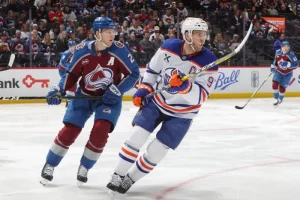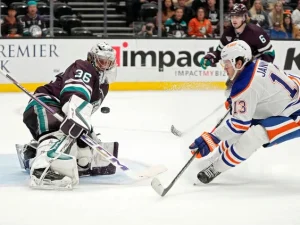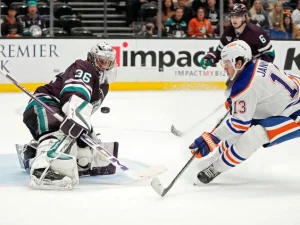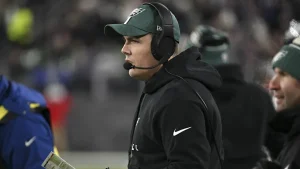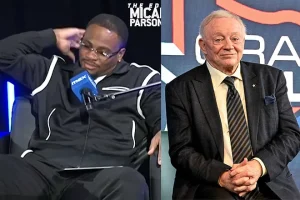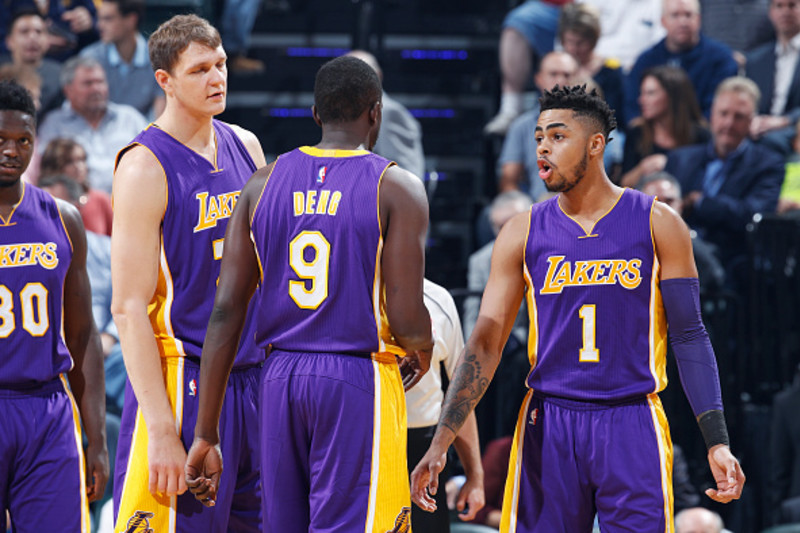
Mark Williams’ trade to the Los Angeles Lakers was void.
Mark Williams’ Voided Trade to the Los Angeles Lakers: A Deep Dive
Introduction
The National Basketball Association (NBA) is no stranger to dramatic trade transactions, some of which alter the trajectory of teams and players alike. However, not all trades reach completion, and sometimes, unforeseen complications force teams to rescind deals that were initially agreed upon. Such was the case in early 2025, when the Los Angeles Lakers attempted to acquire Charlotte Hornets center Mark Williams, only for the trade to be voided due to medical concerns.
This article will take an in-depth look at the proposed trade, the reasons behind its cancellation, and the implications for both the Lakers and the Hornets moving forward.
Background on Mark Williams and His Role in the NBA
Mark Williams, a talented young center, was drafted by the Charlotte Hornets in the first round of the 2022 NBA Draft. Standing at 7 feet tall with a significant wingspan and defensive prowess, he quickly became a key component of Charlotte’s frontcourt. By the 2024-25 season, he had established himself as a promising rim protector and an effective presence in the paint, averaging impressive numbers in points, rebounds, and blocks per game.
Given the Lakers’ need for a reliable center, especially amid injuries to other players, acquiring Williams seemed like a smart move. The trade was seen as a chance for the Lakers to fortify their interior defense while giving Williams an opportunity to contribute to a championship-contending team.
Details of the Proposed Trade
On February 6, 2025, the Lakers and the Hornets agreed on a trade that would send Mark Williams to Los Angeles. In return, the Hornets were set to receive rookie guard Dalton Knecht, forward Cam Reddish, an unprotected 2031 first-round pick, and a 2030 pick swap.
The deal was structured to benefit both sides:
- For the Lakers: The acquisition of Williams would provide them with an athletic, defensive-minded big man who could help alleviate their frontcourt issues.
- For the Hornets: The trade would give them a young scorer in Knecht, a versatile wing in Reddish, and future draft capital to aid their rebuilding process.
At first glance, the trade seemed mutually beneficial. However, NBA transactions are subject to rigorous medical evaluations before finalization, and this would ultimately be the deal’s undoing.
Why Was the Trade Voided?
Following the trade agreement, Williams underwent a standard physical examination in Los Angeles. Reports later surfaced that the Lakers failed him on the exam, citing medical concerns. Although initial speculation suggested that Williams’ history of back injuries was the issue, sources later clarified that the failed physical was unrelated to his previous back problems.
NBA teams rely on detailed medical assessments to evaluate the long-term viability of players they acquire. If a player exhibits signs of chronic injuries or structural issues that could hinder performance, teams may choose to void the trade to avoid potential risks. The Lakers, after reviewing Williams’ medical results, deemed him unfit to join the roster, leading to the cancellation of the deal.
With the trade rescinded, Williams returned to Charlotte, and the assets initially sent to the Hornets (Knecht, Reddish, and draft picks) were returned to Los Angeles.
Implications for the Lakers
1. Lack of Frontcourt Depth
The Lakers entered the trade deadline with a clear need for frontcourt reinforcement. With Christian Wood sidelined due to injury and Jaxson Hayes as the only other available center, the Lakers’ lack of interior presence remained a concern. Williams was expected to play a significant role in addressing these issues, but with the trade voided, the team was left scrambling for other solutions.
2. Financial and Cap Considerations
From a financial standpoint, the voided trade had unintended consequences. The Lakers had structured their roster with the expectation of Williams’ arrival, and the return of Knecht and Reddish slightly altered their salary cap situation. Additionally, because the Lakers were operating within luxury tax constraints, retaining these contracts had financial ramifications for their tax bill.
3. Potential Alternative Moves
With the trade deadline approaching, the Lakers were forced to explore other options. General Manager Rob Pelinka and the front office had to pivot quickly, considering alternative trade scenarios or free-agent signings to fill the void left by the rescinded deal. Reports indicated that the Lakers were in discussions with other teams regarding potential trades for big men, though no immediate replacements for Williams were found at the time.
Implications for the Hornets
1. Retaining a Key Defensive Anchor
Despite initially agreeing to part ways with Williams, the Hornets found themselves retaining their promising center. Charlotte’s front office expressed confidence in his ability to contribute, and head coach Steve Clifford publicly stated that the team was excited to welcome him back into the lineup.
2. Reintegration of Trade Assets
The Hornets had initially planned for a future without Williams, but with the trade rescinded, they had to reintegrate him into their system. While Williams was reportedly professional about the situation, the team had to navigate the awkward transition of bringing him back after attempting to trade him.
3. Future Trade Considerations
Although the trade was voided, this event signaled that the Hornets were open to moving Williams under the right circumstances. Moving forward, Charlotte could explore other trade opportunities in the offseason, possibly involving different teams and trade packages to better fit their long-term goals.
Fan and Media Reactions
The voided trade generated significant discussion among NBA analysts, journalists, and fans alike. Many Lakers supporters expressed frustration over the failed transaction, believing that acquiring Williams would have addressed a crucial need for the team. Meanwhile, Hornets fans were divided—some were relieved to keep Williams, while others were disappointed that the team missed out on an opportunity to gain valuable draft assets and young talent.
Prominent sports analysts weighed in on the situation, with some suggesting that the Lakers should have anticipated potential medical concerns before finalizing the trade. Others questioned whether the Hornets should have disclosed any existing medical issues more transparently before agreeing to the deal.
Looking Ahead
For the Lakers:
- The front office will need to explore alternative options to improve their frontcourt depth.
- Free agency, waiver-wire additions, or future trades could be pursued to address the issue.
- Managing salary cap implications following the rescinded trade will be a key focus.
For the Hornets:
- Integrating Williams back into the roster effectively will be a priority.
- The team could reconsider trading Williams in the offseason under different terms.
- Evaluating Knecht and Reddish’s role within the franchise moving forward will be crucial.
The voiding of Mark Williams’ trade to the Los Angeles Lakers serves as a reminder of the complexities involved in NBA transactions. While trades are often seen as straightforward exchanges of players and assets, factors such as medical evaluations can play a decisive role in determining whether a deal reaches completion.
For the Lakers, this setback forces them to reconsider their roster-building strategy and seek alternative ways to reinforce their interior presence. For the Hornets, it provides an opportunity to reassess their long-term plans for Williams and their roster construction.
As both teams move forward, this failed trade will remain an intriguing “what if” scenario in NBA history—one that could have altered the trajectory of both franchises had it gone through. Whether the Lakers or Hornets revisit similar trade discussions in the future remains to be seen, but for now, the saga of Mark Williams’ near-move to Los Angeles will go down as yet another dramatic moment in NBA trade history.
